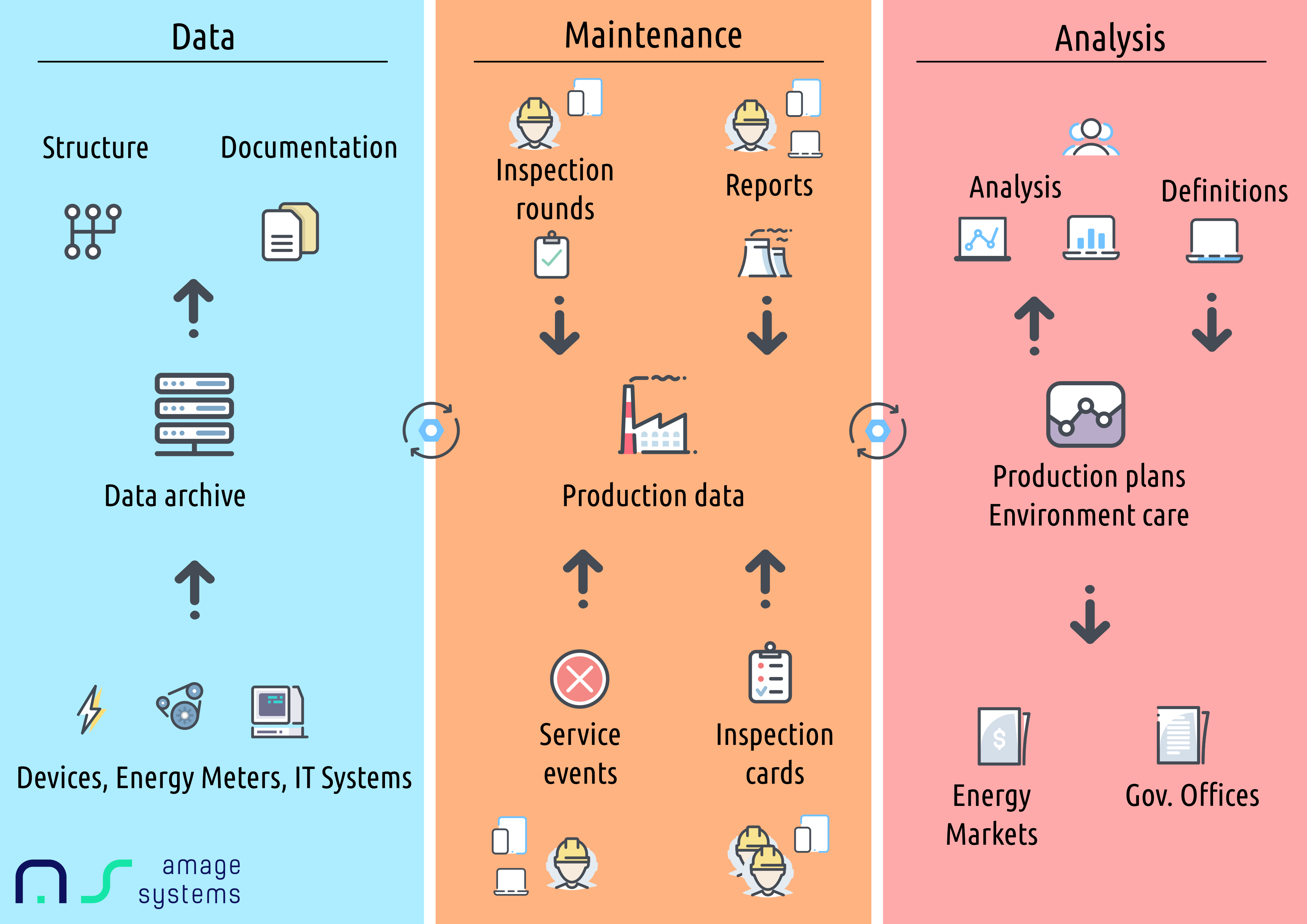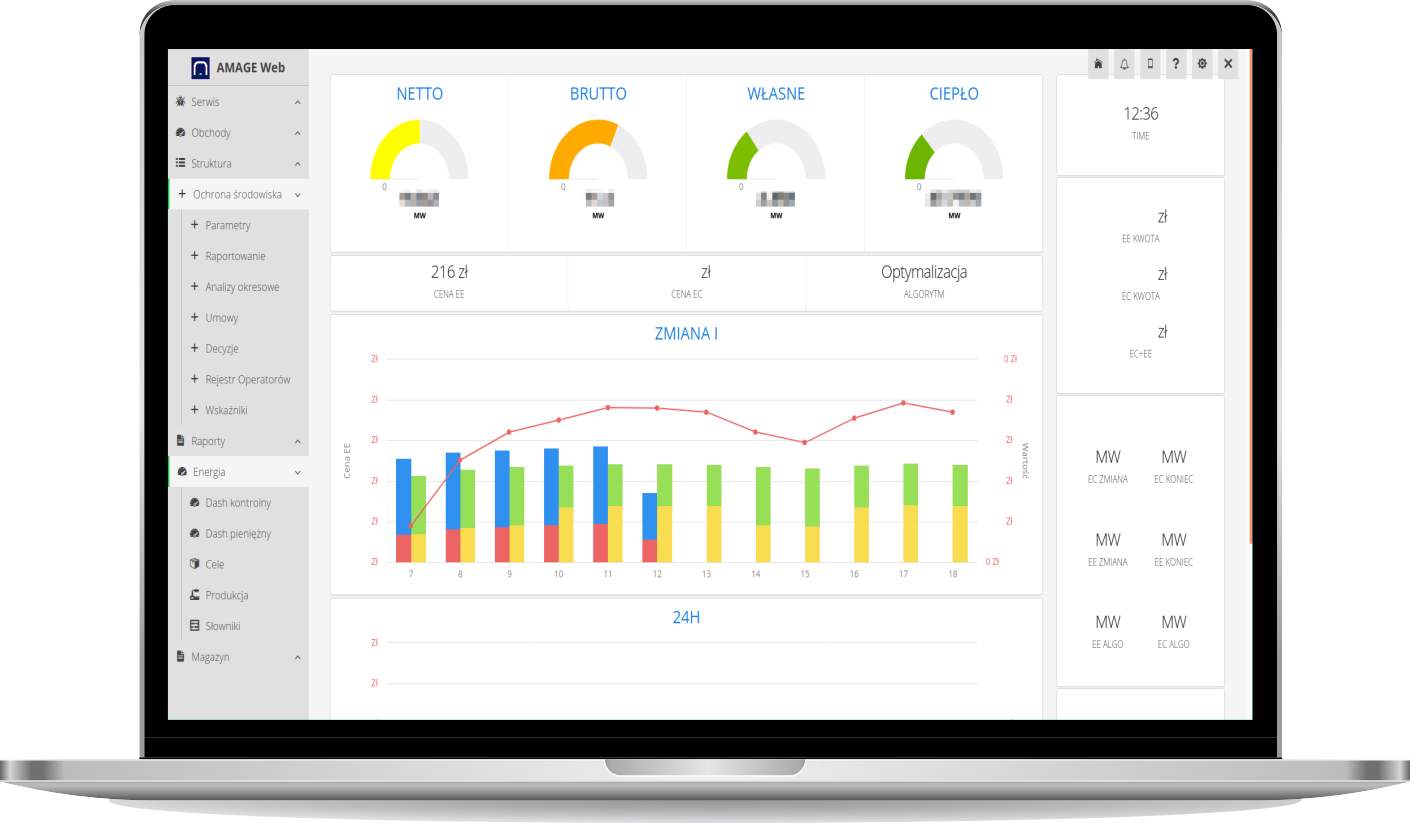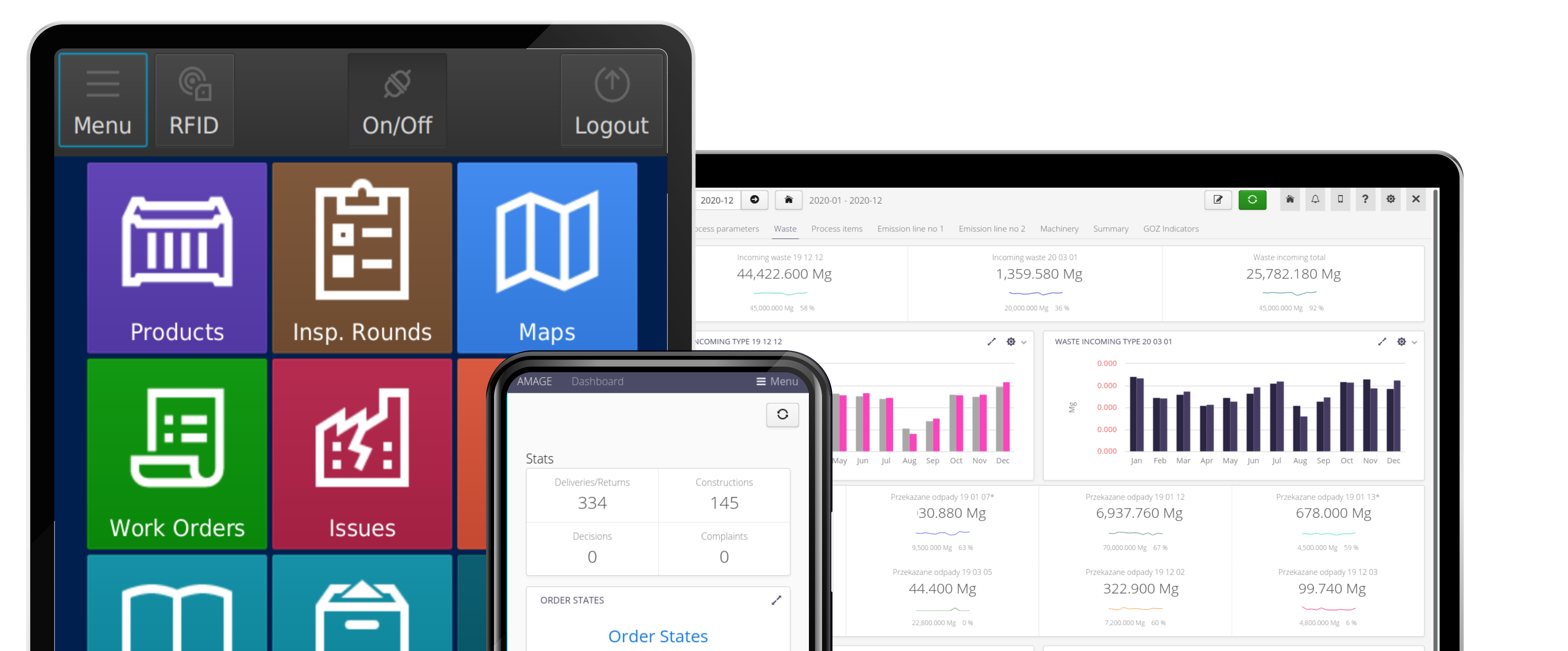Management of Information Concerning Production in Green Energy Plants – A Recipe for Faster Decision-Making, Control of Incomes and Expenses.
Management of Information Concerning Production in Green Energy Plants - A Recipe for Faster Decision-Making, Control of Incomes and Expenses.
Introduction
While planning and building a Thermal Waste Treatment Plant, every owner faces a great challenge; how to efficiently manage the plant, not only in the matter of the fundamental process - waste incineration- but also coordination of all information from the technological line and many more sources. Only an experienced team can acknowledge and appropriately solve this challenge. Presented in this article approach towards information management will allow taking efficient actions, which will facilitate the work of technological lines.
The process of thermal treatment of municipal waste includes waste collection from external companies, inspection e.g. calorific value, along with a selection of appropriate line control systems. Additionally, there are decisions about chemical agents utilization in particular processes, and categorization of collected and post-process waste. In all of those processes, a responsible team has to impose requirements defined during the implementation process by the received integrated permission, which parameters require continuous monitoring and appropriate reactions of specified services. One should not forget about the economic aspect of generating thermal energy, electricity, and its sale on the energy markets. The last-mentioned area is workplace parameters derived from the DCS system and the maintenance teams responsible for securing production's continuity.
All of those variables unambiguously indicate that the team responsible for making rational decisions about the plant's mode of action needs support in this area. Solutions such as ERP or DCS focus on particular areas - in the aspect of the accounting or technological process itself. Usually, the solution is to create new spreadsheets to collect more data. That equals a necessity of using many sources of data and also the workload of the team, with manual data input in multiple, different places, which is time-consuming and burdensome.
That can be approached in another - more effective and integrated - way. However, the key is acquiring knowledge about data sources and their optimal flow.
Process Map

Data and its management is divided into three areas: Data (source), Maintenance, and the Analysis. They illustrate three fields, which usually function independently but are required for proper plant operation. They also show the circulation of information from the initial source - an individual piece of equipment in the plant - all the way to management decisions regarding the implementation of plant operation according to the established annual plan. Let's focus on individual areas and the information originating there.
The master data comes from the devices directly operated by the system - energy meters, frequency converters, or other technical devices - and is stored in a uniform data archive. That is also where other IT systems - the DCS, analyzing environmental parameters, or financial and accounting systems for costs such as invoices/stock documents - are integrated. All this data is stored in an appropriate data structure - the device/process tree - and supplemented by the technical documentation, allowing efficient access to the knowledge generated and accumulated in the plant.

Exploitation covers the area of the actual plant operation where the summary/event data for individual parameters (electricity/heat, water, and wastewater, operating time, waste, etc.) is reported. All this data is derived from plant operations and can be reported manually or from other IT systems. In addition, there are also data collected during technological rounds (performed with the use of mobile devices), handling of service events, control protocols, and measurements performed during periodic control works and annual inspections, as well as performed with the use of mobile devices not only by plant employees but also by external subcontractors.

Including the conditions of an integrated permit, such as elements of reporting to external units, periodic analyses, decision and CRO registers along with history, reminders, and automation of notifications, allows you to cover all areas of the plant's work with a system, which effectively removes the need for continuous monitoring and coordination of emerging data from the management team.
All the previous data are the source for the parent process related to production planning and supervision over its execution. It is worth noting the possibility of defining production plans, periodic limits, and verification rules of notifying responsible people about the necessity to execute reports or exceeding important operational or environmental parameters. Through flexible mechanisms for defining such rules, effective monitoring, and visualization of this data, the management receives a full insight into the current situation of the plant's operation. Additional effects of such a designed and implemented system are the possibility of economic analysis of the plant's operation through integration with the TGE/PSE market quotations and comparative analysis of possible ways of execution of the energy sales process.
The above solution is a comprehensive response to the expectations of more efficient management of plants in the field of green energy. Through a consistent approach to all data and information sources, this solution allows for more responsible plant management and fulfilling the requirements in the area of ecology. This solution offers an integrated approach to the management of thermal treatment of municipal waste, which puts emphasis on the use of mobile devices in this process. In the current epidemic situation, such an approach to the digitalization of data input and automation of inspection/control work allows for faster execution of the work and less contact between plant employees and subcontractors. All this confirms that in such plants, it is possible to manage the flow of information effectively and in a modern way.
Contact Us
If the features presented in this article seem interesting to you, feel free to contact us. AMAGE solutions are available in multiple deployment models providing tangible benefits to our customers.
Solution Demonstration, Implementation, and Purchase

